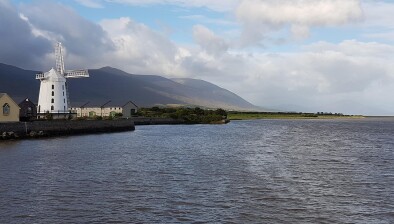High Court: Developer loses challenge to An Board Pleanála’s decision to refuse planning permission
A company seeking to develop a wind farm in Cork has lost an application for judicial review of a decision by An Bord Pleanála to refuse planning permission based on the “cumulative impact on landscape and visual amenity”.

About this case:
- Citation:[2019] IEHC 795
- Judgment:
- Court:High Court
- Judge:Mr Justice Garrett Simons
Dismissing the application, Mr Justice Garrett Simons said the case failed on the merits but that, in any event, he would have refused to set aside the Board’s decision in the exercise of the court’s discretion.
Planning permission refused
In July 2014, An Bord Pleanála refused to grant planning permission to Ardragh Wind Farm Limited for the development of five wind turbines in Cork.
The proposed development would have had a total potential output of approximately 11.5 megawatts – which exceeded the relevant threshold prescribed for wind farm projects under Schedule 5 of the Planning and Development Regulations 2001. As such, the development was subject to an Environmental Impact Assessment (EIA) under Part X of the Planning and Development Act 2000 (which gives effect to the Environmental Impact Assessment Directive (2011/92/EU))
Ardragh brought judicial review proceedings contending that An Bord Pleanála failed to carry out the requisite EIA. Alternatively, Ardragh argued that if An Bord Pleanála did carry out an EIA, then it failed to give reasons for its decision and/or failed to properly record its assessment.
Unusual features
Stating that the proceedings had “a number of unusual features”, Mr Justice Simons said that the benefit gained from a challenging a decision to refuse development consent was “far less obvious” than a challenge against a decision to grant planning permission. He also said there had been inordinate delay in the prosecution of the proceedings, in that they were initiated in September 2014 but an application for a hearing was not made until February 2019.
Furthermore, since the proceedings were initiated, the Supreme Court in Connelly v An Bord Pleanála [2018] IESC 31 had clarified the legal requirements in respect of carrying out an EIA, rendering one of the arguments relied on by Ardragh untenable.
High Court
Mr Justice Simons said that the legal test since Connelly was that the planning decision, or other relevant and connected materials available to any interested party, must demonstrate that:
- An EIA was carried out;
- The decision-maker properly had regard to the results of the EIA in coming to its conclusion.
Applying those principles, Mr Justice Simons said it was “appropriate to read the formal board decision in conjunction with the inspector’s report; and, secondly, that the recording of the EIA and the reasons for the decision to refuse planning permission by reference to the significant negative impacts of the proposed development are to be found in these materials”.
Mr Justice Simons said it was clear from the Board’s evidence that “both the inspector and the members of An Bord Pleanála were not only cognisant of the fact that the proposed development was subject to mandatory EIA, but also were taking active steps in order to ensure that the assessment was properly carried out”.
When further information was provided in a second report, the inspector recommended that permission be refused due to the “cumulative impact on landscape and visual amenity” – concepts which Mr Justice Simons said were “directly referable to the EIA Directive”.
Taking “a common sense approach to the interpretation of the planning decision”, Mr Justice Simons said the decision to refuse planning was “framed in language which can only be understood as referable to the carrying out of an EIA”.
Considering the test in Connelly, Mr Justice Simons said an “informed participant… would have immediately understood from reading the inspector’s two reports; the Board Direction; and the Board Decision that the Board agreed with and accepted the inspector’s recommendation to refuse planning permission precisely because of the significant negative impact it would have on the environment. The requirements of the EIA Directive were fulfilled.
The Board made a decision, informed by the EIS and further information submitted by the Developer, and following public consultation, to refuse planning permission because the proposed development would have had a significant negative impact”.
Concluding that the challenge could not succeed on the merits, Mr Justice Simons said it would be perverse to draw any other conclusion other than the Board “had been cognisant of its obligation to carry out an EIA and had done so”.
Emphasising the discretionary nature of judicial review, Mr Justice Simons added that he would have refused to set aside the Board’s decision in the exercise of the court’s discretion.










